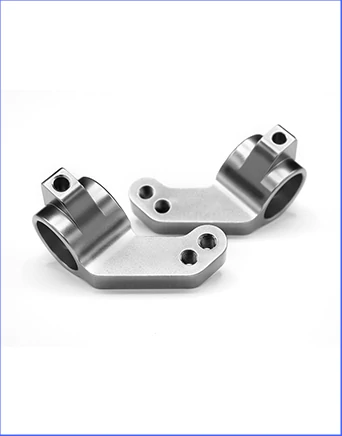Time to read: 6 min

Understanding CNC Machining
CNC machining is a state-of-the-art, computer-controlled process that uses precision tools to remove material from a workpiece and create complex parts. It leverages CAD software to generate a 3D model, which is then translated into G-code for the CNC machine to follow.
Advantages of CNC Machining
- Precision and Repeatability: CNC machines offer exceptional accuracy, typically within 0.0002 to 0.0005 inches.
- Complexity: Capable of producing parts with intricate geometries and high complexity.
- Efficiency: Ideal for high-volume production due to its automated nature.
- Safety: Reduces human error and enhances workplace safety with enclosed work areas.
Disadvantages of CNC Machining
- Initial Investment: CNC machines can be expensive to purchase and maintain.
- Skilled Labor: Requires trained operators and programmers, adding to operational costs.
- Small Batch Inefficiency: Not cost-effective for very small production batches due to high setup costs.
Understanding Conventional Machining
Conventional machining, also known as traditional or manual machining, relies on skilled operators to manually control tools and machines like mills, grinders, lathes, and drill presses.
Advantages of Conventional Machining
- Lower Initial Cost: More affordable entry point for small workshops or startups.
- Flexibility: Excellent for small batch production and prototyping with easy adjustments.
- Adjustability: Operators can make real-time changes based on observations.
- Simplicity: Suitable for parts with basic shapes and simple machining needs.
Disadvantages of Conventional Machining
- Precision Limitations: Relies on operator skill, leading to potential inconsistencies.
- Human Error: Prone to errors due to manual control and fatigue.
- Slower Production: Typically slower than CNC due to manual interventions and adjustments.
- Skilled Operators: Requires highly skilled personnel, which can be challenging to source and train.
Key Differences Between CNC and Conventional Machining
- Precision and Complexity: CNC machining offers higher precision and is better suited for complex parts.
- Material Type: CNC machining can handle a wider range of materials, including hard and brittle ones.
- Production Volume and Efficiency: CNC is more efficient for high-volume production, while conventional machining is better for smaller batches.
- Cost-Effectiveness: CNC has higher initial costs but can be more cost-effective in the long term for large volumes. Conventional machining has lower initial costs but may incur higher long-term costs for large volumes.
- Skill Requirements: CNC requires less operator skill but demands programming knowledge, while conventional machining heavily relies on the operator's skill.
Conclusion
The choice between CNC and conventional machining depends on your specific project requirements, including production volume, part complexity, material type, and budget. CNC machining is superior in terms of precision, efficiency, and safety but comes with higher initial costs. Conventional machining offers flexibility and lower initial costs but may not be suitable for high-volume or highly precise production.
If you're considering CNC machining for your project but are concerned about the initial investment, partnering with a professional service provider like Unofactory can be a cost-effective solution. We offer a range of CNC machining services with expert engineers and state-of-the-art equipment, ensuring high-quality outcomes for your manufacturing needs.




